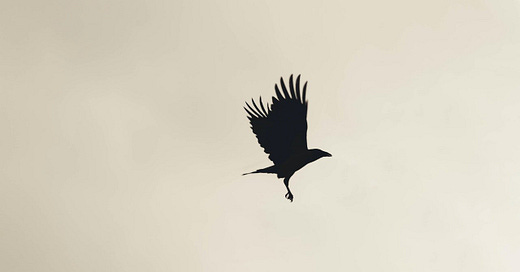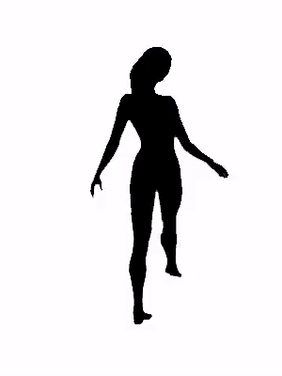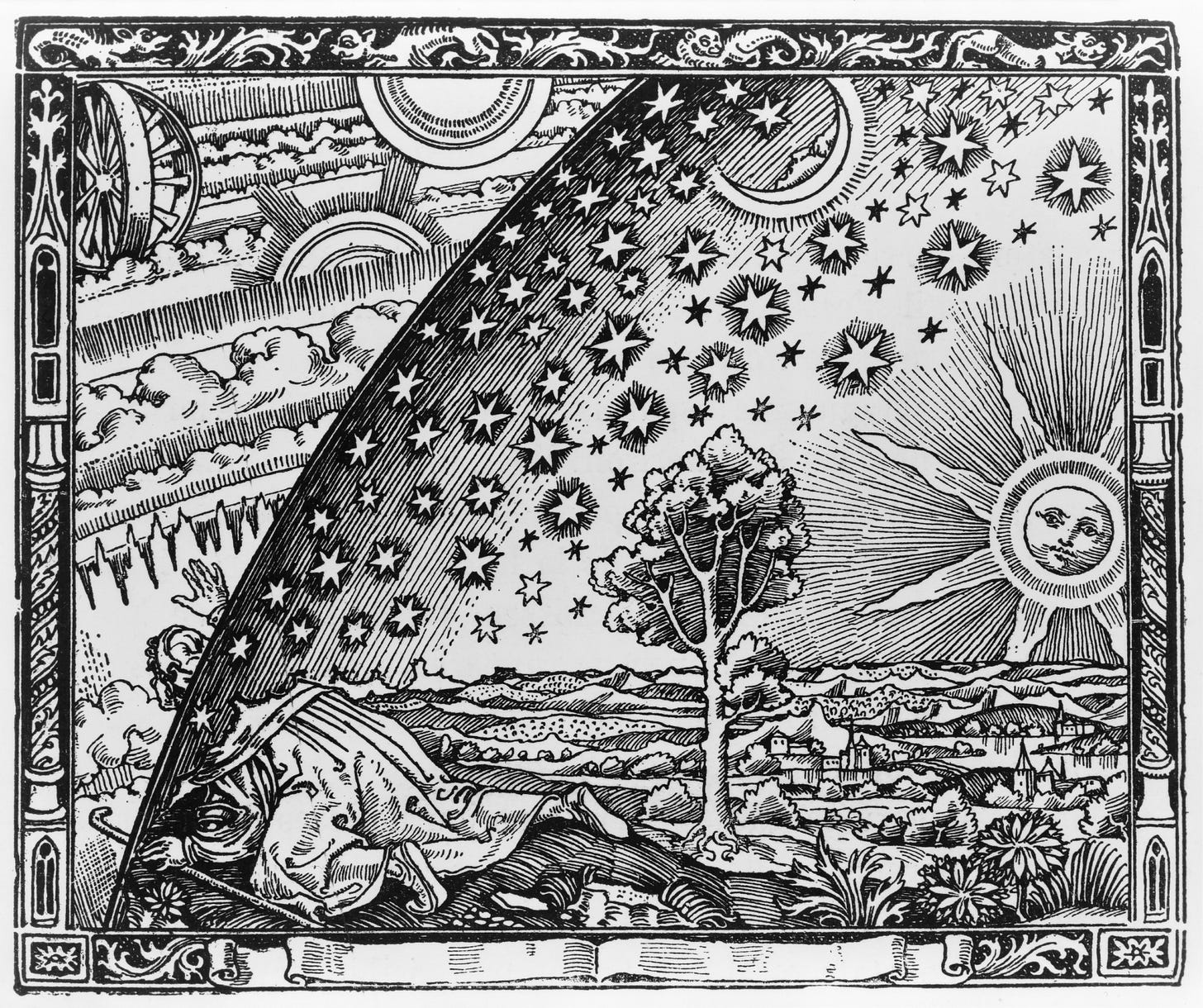Don Juan and Castaneda
During their time together, Don Juan described for Carlos Castaneda many examples of a sorcerer’s power. One was the ability to always be where they should be in any given situation. In one discussion on this topic, Don Juan insisted that he would never be in a situation where he was in danger. Castaneda was equally insistent that the old man could be in danger and not know it. He presented examples to Don Juan, such as: “What if a robber was hiding in an alley with a gun waiting to jump out and shoot you?” Don Juan replied, “I would simply take a different route home.”
Compare this concept to what we in Thelema call True Will. The magician who is aligned with True Will finds that they are often in the right place at the right time.
According to Don Juan, the sorcerer is free of personal habits and routines. Our habits tend to tie us to the world and make us predictable, thus part of Castaneda’s training dealt with dropping personal history, habits, routines, and so-called “normal” perceptions of reality. These techniques lead to what Don Juan called “stopping the world” which he said was the ultimate purpose of sorcery.
Habits: The Daily Grind
In the spirit of pursuing universal freedom and True Will, we can start to identify our own habits and routines. By working to break or alter these habits, we can open ourselves to a wider variety of experiences and perhaps gain more personal power in the process.
First, it is important to clarify what is meant by “habits” in this context. Most often, people think of physical or psychological habits like smoking tobacco, struggles with diet, weight, and addictions to alcohol or drugs. There are also nervous habits like nail biting or stuttering. Many of these are what I would call “New Year's resolution” habits, and are most likely to be the ones we first think of when talking about habits, especially “bad” ones that we want to break. No question, these are legit habits and in some cases even clinical addictions that can take up big chunks of our lives.
Recognize them. Acknowledge them. Work on them, if it is your Will to do so. In the end if you want to overcome such habits and make big changes in your life, you should do it, and these are big targets. They are a drain on personal freedom. Without them, you will recoup much of the energy that you put into them. But these types of habits are not the subject here.
More to the point of a sorcerer’s ability to stop the world are the commonly held small habits and routines that we surround ourselves with every day. These can be less obvious to us because they operate from basic assumptions we have developed over time about the world, or about ourselves. These beliefs are ingrained through repetition, and once acquired, they withdraw quietly into the background of our busy daily experience. Routines become the scaffolding that we use to describe and define our lives.
One example of this type of habit is having a morning routine, like waking up at a certain time, getting ready for work in a particular sequence. Does your alarm go off at the same time each day? Are the morning tasks of hygiene, dressing, eating, and walking the dog taken in the same order? Are you out the door at the same time every day to catch the bus or avoid the worst of the traffic in your car?
Similar micro routines guide all of the events of the day, the week, and the month. We may drive the same route to and from work. We often take meals at the same time like clockwork. We could visit the same half dozen restaurants every month, watch the same short list of television programs, or read the same magazines and books.
We often follow a bedtime routine as well, so that we can sleep well and get up in good time the next day to do it all over again. This daily grind is repetitive. The benefit of having structure and routine and habit is that it helps organize our lives and makes things manageable. The flip side is that routine becomes the way we define the limits of what we can do and who we are.
When we allow these routines to control us, we never move or think outside their narrow boundaries. Our lives can become boring, inflexible, and robotic. This is the reason why (in Don Juan’s worldview) the sorcerer should work hard to be free of habits and routines.
The path to freedom from routine is wide open and fairly simple: Identify your habits, and then do something different. If you take the same freeway to work every day, mix it up and take surface streets once in a while. When driving to the store, take a side street instead of the main road. Walk instead of drive. Watch a different television show on Tuesdays, or read a book instead. Find a new author or a new genre of writing that you’d never thought of reading before. If you go to lunch at the same time, go an hour earlier or later. Go to a new sandwich shop. Try a new cuisine for a change. None of this is particularly difficult or groundbreaking, but it breaks us out of our normal routine, and that can open up new vistas for experience.
The Luck Factor
In the early 2000’s, psychologist Richard Wiseman conducted experiments to try to find out why some people are lucky and others are not.
He interviewed hundreds of people who self-identified as either lucky or unlucky. He then put them to a test. They each were given a newspaper and instructed to count the number of photographs inside. Wiseman found that on average the unlucky people took about 2 minutes to count all of the pictures, but the lucky people averaged about 2 seconds. Why? On page two, there was a message covering half the page in big letters that said “Stop! There are 43 photographs in this newspaper.” The lucky people saw the message right away, while the unlucky people were so busy looking for photographs that they missed it.
Wiseman concluded that lucky people have four traits in common. They are skilled at noticing and creating chance opportunities; they make lucky decisions by listening to their intuition; they create self-fulfilling prophesies with positive expectations; and they adopt a resilient attitude when bad luck strikes.
The main point here is that Wiseman followed up his study by setting up a “Luck School” where he successfully taught unlucky people to become more lucky. One of the main techniques was to break out of old habits, try new things, and create chance encounters. He found that over 80% of his students reported being happier, more satisfied in life, and luckier.
The full article is here, and well worth the read. It is a great example of how breaking out of our routines can promote powerful change.
The world is only a description
In addition to the habitual routines that guide our daily schedule, there are even more subtle and hidden ones that we may not even be aware of. These habits were taught to us from birth, and they affect the way we perceive the world around us.
One of Don Juan’s most frequent remarks was “The world is only a mutually agreed upon description.” He and Castaneda would argue repeatedly about whether they were in a house or not. To Castaneda, it was obvious that they were in fact sitting and talking together in the living room of a house, but Don Juan insisted that his description of reality was different, and because he was able to stop the world, to shift and control his assemblage point, that from his perspective they were not in a house at all. On the surface, this seems like a silly disagreement, and Don Juan’s position impossible to prove. But if we take Don Juan’s point seriously about reality being nothing more than a mutually agreed upon description, it points to a deeper truth about the way we learn and perceive reality.
As babies, we learned about the world by interacting with our parents, observing them, and repeating what they said and did. We were taught a spatial view of the world that functions in three dimensions, and where there is a separation between ourselves and other people and objects. We learned the dualistic spectrum of the physical world: heat and cold, dry and moist, hard and soft, pain and pleasure. We learned that time is a way to measure duration and to keep track of events in a linear progression. We interacted with other kids who were also indoctrinated into this shared description of the world. As grown ups, it is we who have become masters of this description of reality, and we pass along “how the world works” to our children without thinking.
To be clear, there is more going on with this than the simple use of words to describe things. If you say a wall is not solid, and I agree with you, that doesn’t mean that you and I can walk through it. Reality is made up of sensory input which our brain converts into a view of the world around us, but psychological experiments have shown that the continuity of our perceptions is not complete. Our brain is constantly filling in gaps of missing information to give us what appears to be a complete picture. There are small cracks in reality as it is presented to us, cracks that we can find and use to prove to ourselves that reality not what it seems.
Optical Illusions
The optical illusion is a practical and useful example of this principle, because it plays on our natural blind spots and reminds us that our senses are fallible and limited. These cracks in perception provide edges that can be grasped and leveraged by the ceremonial magician to come to a larger view.
A cube made up of lines can switch its position in space back and forth if we look at it in different ways. The picture above of a lady who also is a crone is another classic example of this illusion. Generally dismissed as entertainment, optical illusions are tools that expose the limits of our visual sensory mechanics within the context of the three dimensional world we have been taught to perceive.
An auditory version of this can be discovered when listening to the siren of an emergency vehicle, like an ambulance. When the siren alternates from high pitch to low pitch in quick succession, the pattern of sound creates foreground and background tones. With effort, one can swap them, and the background tone (or absence of it) comes forward and pushes the foreground into the background. This is similar to consciously switching back and forth from young woman to crone in the optical illusion above. The resulting sound is a strange inversion of the usual sound. This is of course nearly impossible to describe in words! Try it for yourself next time you encounter an ambulance blaring its siren.
Stage Magic
Stage magic is sometimes dismissed as nothing more than simple trickery. We see the magician’s assistant enter the box and disappear, and we know that there must be a secret panel at the back of the box that makes the illusion work, even if we can’t see it. The stage magician plays with our preconceptions about how objects in the world should behave. Their tricks take advantage of unexpected blind spots that we all have.
A good magic trick is surprising, puzzling, and entertaining. For most people that is where it ends. Others may be compelled to find out how the trick was done. For the ceremonial magician, there is supreme value in the illusory nature of the trick beyond the entertainment of it or knowing the secret to how it was accomplished. Illusion opens the doors of perception. Our senses tell us one thing, when in fact we know there is a secret truth we are not seeing. The awareness of a veiled reality taps at the root of all western magical traditions and mystery schools.
Castaneda’s magical journey is often mistakenly characterized as a drug trip, when the truth is that Don Juan’s teachings were primarily about the ability to shift perception. The transformational nature of Crowley’s system of magick shows that there is more to the physical world than what our limited senses convey. The ceremonial magician recognizes the stage magician’s control of perception as a familiar and common thread within the tapestry of her own work. The difference is that, while the stage magician manipulates the mechanisms of perception to deceive and entertain his audience, the ceremonial magician probes the same mechanisms deliberately in order to reveal inner truths about the nature of being.
Reading is Fundamental
One exceptionally strong habit that most all of us have is the ability to read. We have had years of practice finding meaning in the pattern of random-shaped markings that we were taught to recognize as letters and words. We do this all the time without even thinking twice about it.
Contrast that experience with what happens when we see words in an unknown language. Letters and words can be identified as such, perhaps, but without inherent meaning. If it is a language that is slightly familiar, then we might be able to gather some meaning from the words. But it takes effort; it isn’t a quick process. There is no instant understanding.
All day long, we are surrounded by street signs, advertisements, emails, blogs, social media, books, magazines, and all of the rest. We read everything we see automatically, and know almost instantly what it means. I say “almost instantly” because if you pay very close attention, there is a fraction of a second between the one moment your eyes see the billboard sign and the next when your brain says “Call 916-INSURED.”
It is possible to focus one’s attention on the split second between observation and interpretation. Once that space is found and recognized, it then becomes possible to manipulate it. With practice, one can begin to widen the gap and hold off the automatic interpretation of words, to the point where we look at a known word and do not recognize it. Known words become foreign language for a longer and longer period of time. In this way, we take hold of the levers that control perception.
Full Stop
The sorcerer training that Don Juan gave Castaneda was meant to break him out of his normal consciousness and show him that other possibilities were available to him. By teaching Castaneda that the world is just a description and giving him tools to prove it for himself, Don Juan prepared him for the great test of the Nagual: stopping the world. Our own magical journey has the same goal of universal freedom and self discovery, culminating in Knowledge and Conversation and Crossing the Abyss. As we explore the nature and powers of our being, we begin to take hold of the blinders that we did not even know were there, and our vision opens to the truth behind reality.








